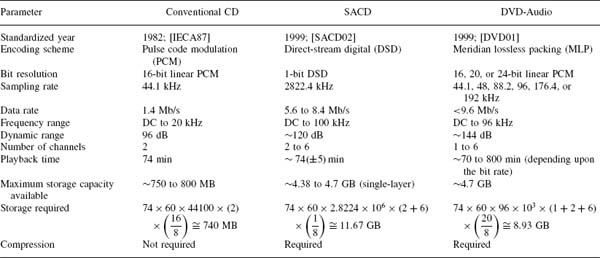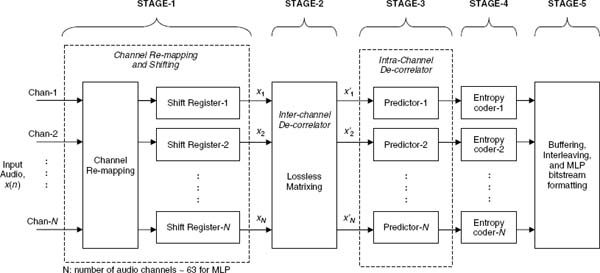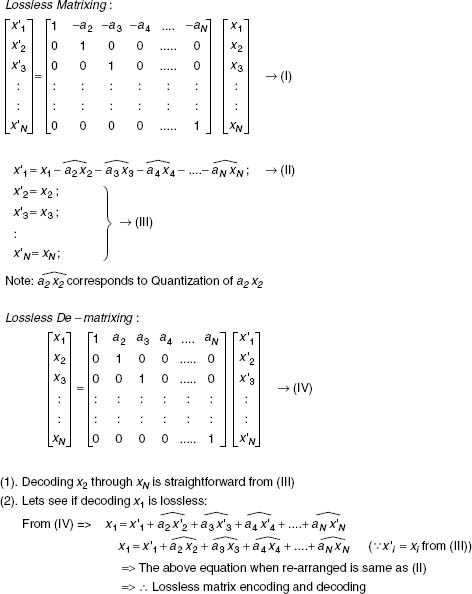11.4 SUPER-AUDIO CD (SACD)
Almost 20 years after the launch of the audio CD format [PhSo82] [IECA87], Philips and Sony established a new storage format called the “super-audio CD” (SACD) [SACD02] [SACD03]. Unlike the conventional CD format that employs PCM encoding with a 16-bit resolution and a sampling rate of 44.1 kHz, the SACD system uses a superior 1-bit recording technology called direct stream digital (DSD) [Nish96a] [Nish96b] [Reef01a]. SACD operates at a sampling frequency 64 times the rate used in conventional CDs, i.e., 64 × 44.1 kHz = 2.8224 MHz.
Table 11.2. Conventional CDs versus the next generation storage formats.


Figure 11.8. MLP encoding scheme [Gerz99].

Figure 11.9. Lossless matrixing in MLP.
Moreover, SACD enables frequency response from DC to 100 kHz with a dynamic range of 120 dB. SACD systems enable both high-resolution surround sound audio recordings (5.1 or 3/2-channel format) as well as high-quality stereo encoding. Some important characteristics of the red book audio CD format [IECA87] and the SACD and DVD-audio storage formats are summarized in Table 11.2.
The main idea behind the DSD technology is to avoid the decimation and interpolation filters that ...
Get Audio Signal Processing and Coding now with the O’Reilly learning platform.
O’Reilly members experience books, live events, courses curated by job role, and more from O’Reilly and nearly 200 top publishers.

